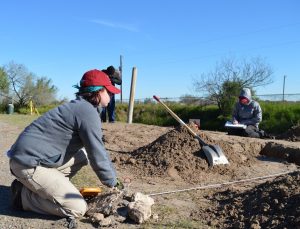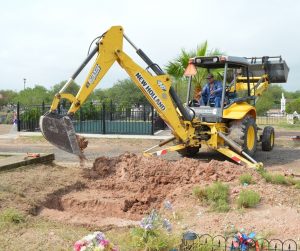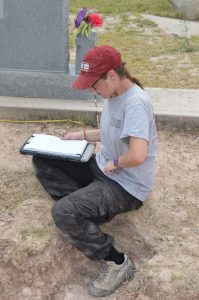It is almost unbelievable that in less than two weeks (as I write this) I will be on my way to Willacy County, Texas to begin participating in the Beyond Borders mission. I have been passionate about applying an anthropological approach to humanitarian efforts for years now, but this will be my first experience. I want to be as informed as possible before arriving in Texas, so I have been spending some time over winter-break reading about this relatively silent mass disaster that is taking place in our country. It is truly heartbreaking to hear some of the personal stories of those involved, so I am both excited and nervous to embrace the challenges ahead. However, I am confident our team will work together to reach our designated goals.
This January, we will be solely focused on exhumation, and I will assume the position of mapping apprentice. Leann, the current mapping expert for our team, has gained a great deal of valuable experience through Beyond Borders, and other cases in which the University of Indianapolis has assisted law enforcement agencies in Indiana. Every exhumation varies depending on the circumstances, landmarks, vegetation, soil, weather, and so many other factors that I am sure to discover once we get started. I feel so incredibly grateful to have been provided this opportunity because the ability to create accurate hand-drawn and digital maps is such an essential technical skill that is needed for every archaeological situation. I have big shoes to fill as Leann’s apprentice, but I am positive she will be an incredible mentor!
As the trip approaches, I keep thinking about how much this experience is likely to affect my career as an anthropologist and human biologist for the rest of my life. I was not expecting to be nervous or anxious, but as I continue packing and shopping for supplies the reality is sinking in. Even after completing my first semester of graduate school, I feel a bit rusty in osteology. There is so much to learn and constantly refresh upon when pursuing a career in forensic anthropology. As a relatively new student in the program, I hope that I have a strong, solid foundation that will enable me to quickly grasp the methodologies we employ. After hearing all the stories from the students who went to Texas for previous field seasons, I realized how many amazing memories are made during these trips with Beyond Borders. I look forward to meeting professors and students at Texas State University, law enforcement officers, and community members who are also involved in the project. Even though the work days may be brutal at times, working through it alongside my team members will allow me to get to know them on such a more personal level. I am eager to be part of the new memories, laughs, meals, car rides, and moments back at the hotel. This trip will be my first time in Texas, and I cannot imagine a better, more meaningful way to check another state off the list.
January 2, 2018…hurry up and come sooner!


